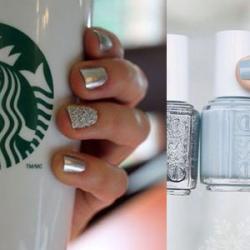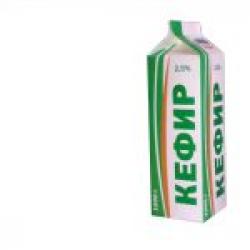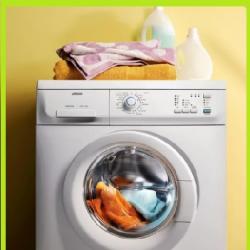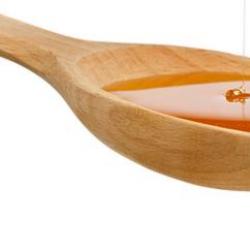Foot peeling at home (recipes). Proven recipes for foot peeling at home
Foot peeling at home is a confident step towards soft and perfect skin. To carry out the “transformation” procedure, it is not necessary to use store-bought formulations and products; you can prepare an effective alternative yourself. The main advantage of homemade cosmetics is that the prepared product is made from good quality products and will not cause complications if used correctly.
What products can you use for home peeling?
Peeling your feet at home is a gentle cleansing procedure. The products used for peeling the legs, as a rule, are weaker and more gentle, and do not provoke serious complications even if used incorrectly.
Homemade foot peelings do not differ at all from salon cleaning options in terms of the principle of action and the order of execution. Compositions for foot peeling can be divided into two types:
- For chemical peeling of legs, various acids are used, for example, lactic, glycolic or fruit. This procedure is more complex and requires careful implementation, compliance with the rules and procedures. If they are violated, burns and an extension of the period of full recovery are possible;
- For mechanical peeling, everything is simpler here. As a rule, for mechanical cleansing, compositions with abrasive particles are used (in home cosmetology these are salt, sugar, ground coffee and others) or masks with natural acids, which are found in ordinary products.
As for the depth of impact on the skin, only superficial or medium peeling can be performed at home. During superficial cleansing of the legs, only the stratum corneum of the epidermis is affected, while products for medium peeling penetrate deeper and act up to the spinous layer inclusive. This is quite enough to guarantee the skin a well-groomed appearance, softness and elasticity.
Recipes for natural scrubs and masks for feet
Homemade scrubs and foot masks are the most loyal peeling products. They are gentle on the skin, nourishing and moisturizing it without complications or pain. Peeling with scrubs combines light massage and aromatherapy.
Foot scrubs and masks are so simple that anyone can prepare them. By exfoliating with homemade scrubs, your feet are guaranteed to get a lot of pleasure, and your heels will become soft and elastic. For foot peeling at home, recipes for the best products will come in handy. We present to your attention top scrubs and masks for feet.
Kefir foot peeling
Kefir contains natural lactic acid. Peeling with lactic acid is considered one of the popular techniques used by beauty salons to combat keratinized areas on the skin. Lactic acid is active, destroys dead cells and stimulates the appearance of new ones. The procedure is painless and does not cause itching, redness or other side effects. To prepare a kefir scrub you will need:

- 0.5 tbsp kefir without additives.
- Heat the kefir in a bathhouse to a temperature of 35–38C.
- Place the feet in plastic bags, into which you then pour warm kefir. To prevent the bags from falling off and the product from spilling out, tie the bags and put on warm socks.
- For 2 hours, do what you love, try not to walk.
- After the specified time, remove the bags and rinse your feet in water.
- Complete the foot peeling by applying a nourishing foot cream.
Coffee peeling of feet
Scrubs with ground coffee are somewhat different from soft kefir cleansing. The main focus is on abrasive coffee particles. They “tear off” dead cells, making room for new and elastic ones. At the same time, massage with ground coffee enhances blood microcirculation, activates metabolic processes, and the nutritional composition itself fills cells with useful substances and minerals. To prepare a coffee foot scrub you will need:

- 1 tbsp. l. coffee grounds;
- 1 tsp. medium or finely ground sea salt;
- 2 tbsp. l. unrefined olive oil.
- Mix salt with coffee.
- Add oil extract to dry ingredients. It can be olive or any base cosmetic oil.
- Steam your feet in the bath.
- Using massaging movements, distribute the prepared mixture over your feet.
- Perform a light foot massage for 2-3 minutes.
- You can leave the peeling product on for another 5-10 minutes.
- Rinse off the scrub with water, and additionally treat problem areas with pumice.
- Dry your feet and apply nourishing cream.
For nourishing scrubs to have maximum effect, apply them to cleansed and steamed skin. To do this, before the procedure, take a hot bath or soak your feet in a bath with herbs and sea salt.
Chocolate peeling
Chocolate peeling for legs and body is a favorite salon method of cleansing the skin. Chocolate is rich in antioxidants and vitamins, so it actively helps eliminate toxins and neutralize free radicals. The secret of this effect lies in cocoa, which is what will be used to prepare the scrub:

- 15 g cocoa powder;
- 7 g granulated sugar;
- 60 ml whole milk.
- Lightly heat the milk in a sauna (up to 38C).
- Mix all ingredients until sour cream thickens.
- Apply the fragrant product to cleansed foot skin.
- Massage your feet for an additional 3-5 minutes.
- Do not wash off the chocolate product for another 10–15 minutes.
- Rinse your feet with warm water.
- Apply nourishing foot cream.
Homemade foot scrubs and masks are weaker than chemical compounds in beauty salons. Therefore, be prepared that the procedure will need to be repeated over time.
Honey peeling
Honey is a treasure trove of vitamins and nutritional components; its healing properties have been used in cosmetology for a long time. It has a beneficial effect on cell metabolism and stimulates regeneration processes. To prepare honey foot peeling you will need:

- 1 tbsp. l. liquid honey;
- 2 tsp. salt (preferably sea salt);
- 2 tbsp. l. olive or almond oil.
- Mix all ingredients until the mixture is homogeneous.
- For greater effectiveness, vegetable oil can be slightly heated.
- Apply the mixture to your feet.
- Massage your feet for 3-5 minutes.
- Do not wash off the honey solution for 15 minutes.
- Remove any remaining scrub with warm water.
- Apply foot cream to secure the results.
One homemade scrub may not be enough to remove dead skin layers, so additionally use a pumice stone or a special nail file. If you are completely satisfied with the result, you can omit mechanical cleaning. Be sure to apply a nourishing cream at the end of the procedure.
Walnut peeling
Nuts are sources of natural fatty acids. Walnut scrubs perfectly soften problem areas, remove dead cells, and fill them with a lot of nutrients. Treat your feet to a fragrant peeling product with the addition of almonds or hazelnuts. To prepare the composition you will need:

- 7 walnut kernels;
- 1 tbsp. l. oatmeal;
- 1 tbsp. l. honey;
- 5 tbsp. l. yogurt.
- It is recommended to use liquid honey; if necessary, melt it to a fluid state.
- Grind oatmeal and nuts.
- Mix the ingredients until smooth.
- Distribute the prepared nut scrub over the cleansed skin of your feet.
- Massage your feet for 3-5 minutes.
- Leave the product on your feet for 15 minutes.
- Rinse off the composition.
- Treat your skin with nourishing cream.
Homemade peeling socks
When you don’t have the patience and time for long-term degeneration of the skin on your feet, peeling socks come to the rescue. The procedure refers to superficial chemical peeling of the legs. It is very effective and easy to perform, and also has a minimal risk of side effects. In just 7 days, rough and dry heels will be replaced by young, firm and elastic heels. It’s hard to believe in this, all you have to do is try it for yourself.
A similar method of cleansing heels came to us from Asian countries, which is where the world-famous foot peeling socks are produced. You can recreate equally effective socks at home. For the cleansing procedure you will need:

- Lactic acid;
- Cotton socks;
- 2 plastic bags.
- Trim your socks so they only cover the bottom of your feet (sole and heel).
- Dilute lactic acid with water so that its concentration is up to 20%. The higher the concentration, the greater the chance of harming the skin.
- Soak the cut-off socks in the acid solution.
- Put the prepared socks on your feet.
- Place the feet in bags. Secure the bags to your legs to prevent them from falling asleep.
- Relax and do what you love.
- After 2 hours, take off your socks, rinse your feet with water and apply cream.
If there are cuts and wounds, expectant and nursing mothers, as well as patients with diabetes, should not use socks for chemical peeling. The limitation of the procedure also applies to patients with allergies to lactic acid.
After chemical peeling, there is no need to treat the skin with pumice; the acidic composition already actively affects dead cells. You will notice the first result after 1-2 days – the skin will begin to peel and sag. It is impossible to rip off layers of the epidermis that are peeling off. Wait until they fall off and enjoy your soft heels.
To prevent problematic calluses and corns, roughness and roughness of the heels from disturbing your beautiful feet, competent and high-quality care for them is enough. Natural masks and scrubs will help you with this. Such cosmetics will cost pennies, but their compositions are a real wealth for the skin of the feet. Treat yourself to healthy and soft feet.
This procedure is based on the ability of acids to penetrate into the deep layers of the skin and remove dead cells. Fruit acids, among other things, have antioxidant and anti-inflammatory properties.
The procedure helps to renew and restore the skin of the legs. Acid peeling for feet helps get rid of calluses and cracks, stimulates and normalizes metabolic processes in skin cells, prevents abrasions and moisturizes the skin.
How to perform acid peeling for feet
Currently, acid peeling for feet is a fairly popular and in-demand procedure offered by many beauty salons. It is based on the effect of AHA group acids on the skin.
Acid peeling for feet is carried out as follows:
- special napkins soaked in an acid solution are applied to the clean skin of the feet;
- then the legs are wrapped in plastic wrap;
- After the required time has passed, the napkins are removed from the feet and, using a special spatula, the pieces of skin that have peeled off (softened) are removed.
After the procedure, nourishing and moisturizing creams are applied to the skin of the feet. Cosmetologists recommend acid peeling for feet periodically - once every three weeks.
When peeling for pedicure is contraindicated
- the presence of various skin and nail diseases;
- mechanical damage to the skin (scratches, cracks and wounds);
- individual intolerance to the components of the product.
Acid peeling for feet at home
Modern cosmetic companies produce preparations that allow you to perform acid peeling for the feet at home. They are produced not only in the form of napkins, but also in the form of socks. As a rule, such socks are put on for about an hour, after which they are removed and the stratum corneum is removed using pumice.
Japanese foot peeling is quite popular. You can buy “Japanese socks” (COGIT Foot Peel Pack) for peeling at a price of 600-850 rubles. According to reviews on cosmetic forums, Novasilk Exfoliation wipes from CORPORA are also an effective product for caring for the skin of your feet. If you are interested in this pedicure peeling, you can buy it at special sales points for about 820 rubles.
You can carry out acid peeling for the feet without using cosmetics, for example, using kefir. To carry out kefir foot peeling you will need: full-fat kefir (100 g), two plastic bags, terry socks and nourishing cream. Warm the kefir a little and apply it to your feet, then put plastic bags (film) and terry socks on your feet. After an hour and a half, wash the kefir off your feet and moisturize them with cream. Kefir peeling is recommended to be done before bedtime. After several similar procedures, your heels will become smooth and tender.
All skin is subject to aging, and the legs are no exception - over time, the skin on them becomes flabby and loses its attractiveness. In order to preserve the youth, tenderness and beauty of your feet for as long as possible, you need to properly care for them. One of the methods of such care is foot peeling, which can be carried out both in a beauty salon and at home.
Benefits of peeling
Peeling is one of the most effective means to combat aging skin on the feet. Its purpose is to remove dead skin cells of the epidermis. Peeling keeps the skin of the feet toned, promotes its regeneration, stimulates the growth of new cells, and accelerates blood circulation in the tissues. In addition, it is an excellent prevention of various types of skin diseases.
Foot peeling can be done in a salon or at home, but in any case it will bring a lot of benefits. Our legs are exposed to enormous stress every day, and therefore often get tired. With age, troubles such as swelling, cramps, muscle pain, and heaviness appear. And the anatomical features of the structure of the foot and incorrectly selected shoes often become the cause of corns and calluses. It is peeling that can cope with rough skin and keratosis, making the surface of the foot smooth and soft.
Peeling in the salon
Foot peeling in the salon is carried out using special preparations that affect both the superficial and deep layers of the skin. In this case, skin renewal occurs at the molecular level, and the resulting effect itself is quite long-lasting. Salon peeling differs from peeling at home in that it has a more pronounced preventive effect against fungal diseases, eczema, calluses and corns.
Today, the following types of peeling are carried out in a beauty salon:
- chemical;
- hardware;
- mechanical.

Chemical peeling involves the use of various types of acids, which is why it is also called acid peeling. Preparations for it are produced in the form of gels, powders, and masks. Acid peeling for feet is carried out very carefully, avoiding any friction, and fruit or other acids simply dissolve dead cells.
Chemical peeling can be superficial or deep. Superficial peeling includes:
- salicylic;
- pyruvate;
- glycolic;
- almond;
- jensera;
- chemical.
The superficial procedure also includes chemical-mechanical exfoliation. The phenol variety is considered to be the deepest peeling, but it is carried out only in the clinic and requires increased caution and attentiveness.
Home peeling
Foot peeling can also be done at home, using not only store-bought cosmetics, but also improvised means. Egg or nut shells, sea or table salt, rice grains or ground coffee are suitable for making a scrub. And if you mix these ingredients with olive or any other cosmetic oil, sour cream, kefir or natural yogurt, you will get an excellent mask. The home procedure is more gentle than exfoliating the skin of the feet in the salon. However, many recipes for foot masks and scrubs prepared at home have an effect no worse than that obtained after a salon peeling procedure.

Not so long ago, an unusual product appeared in cosmetics stores - which can also be used at home. This is a truly amazing way to care for your feet, developed and patented by Korean scientists. The use of such socks provides deep exfoliation and accelerates the regeneration of epidermal cells. Typically, the effect of one procedure lasts several months, on average up to six months. Moreover, its cost is much lower than in a salon, but the result is no less impressive.
There is no need to steam your feet before the procedure – just wet them. They also need to be carefully examined - there should be no wounds, abrasions, cracks, cuts or other damage, as this can provoke severe pain or even an inflammatory reaction. Typically, homemade foot peels are performed no more than twice a week.
After exfoliating at home, you must lubricate the skin of your feet with a nourishing cream or make a moisturizing mask - this can be a store-bought cosmetic product, some complex home recipe, or just cosmetic oil.
The skin on our feet is the thickest and roughest in the entire body, it constantly grows and thickens, forming areas that are unpleasant to the touch.
Foot peeling at home cleanses the feet of excess accumulated keratinized cells; this can be done using various recipes: creams, masks and special socks that have good reviews.
It will also cope with cracks on the feet and heels, peeling and excessive dryness of the feet, rejuvenate the skin, and give it freshness.
Review #1 about socks while waiting for foot peeling
« The socks helped me get rid of the problem of rough heels and cracks on them. Of course, the first week is pure discomfort, as the skin simply peels off in rags. But then all the peeling goes away, and the legs remain smooth, like a baby’s. The effect lasts for more than a month. And then I put my socks back on for two hours».
If you are planning a trip or an important event, it is better to exfoliate your feet two weeks before the scheduled date so that the skin has time to completely renew itself. It is possible to help the process and speed up regeneration - every time you take a shower, rub your feet with a polishing file.

Peeling socks for feet are quite cheap, but at the same time they can replace an expensive hardware pedicure in a beauty salon. And the smoothness of the feet after peeling lasts much longer than after regular sanding with files in a cosmetologist’s office. Peeling affects not only the surface of the foot, but also the toes - the entire surface of the feet will have a well-groomed and renewed appearance.
Review #2 about special socks
« I didn't even know my heels could be so pink and smooth! I bought Skinlite socks in the store, flattered by the reviews, and immediately put them on at home. The first days nothing happened, I even forgot that I was doing the peeling. And then, after taking a shower, I suddenly discovered that something was wrong with my feet - huge pieces of old skin were hanging from both soles. In two days, my legs completely peeled off, and underneath I found such a pleasant, silky peach-colored skin!»
Korean brands are considered to be the highest quality brands producing peeling socks. It was they who first thought of combining the effectiveness of chemical peeling with the convenience of home use - they placed a fabric backing soaked in a special solution in plastic socks. This innovation instantly spread throughout the world, providing Korean brands with fabulous income.
However, you can make these peeling socks yourself with your own hands. All you need is two old thin socks, scissors, small plastic bags and a lactic acid solution, which can be purchased at any soap making store.
Foot peeling at home: recipes
What you will need
- Lactic acid (diluted to 20%);
- A pair of old socks;
- Two plastic bags;
- Two hours of time.
First of all, take two old socks (that you don’t mind throwing away), cut off the top of them so that the socks cover only your feet and toes, without touching the skin of the top of your feet.

- These socks will need to be soaked in a special compound - diluted lactic acid.
- Lactic acid is initially sold in a concentration of 80%, but should not be used undiluted as there is a high risk of chemical burns. The acid must be diluted with water to 20%.
- Wet the cut-off socks well with this solution and then put them on your feet.
- Place the feet in two small plastic bags.
Such a home peeling for heels will be no different from a store-bought or professional salon one - you will get absolutely the same result. On the second or third day, the skin on the feet will begin to peel and flake off, and a week after the day of peeling, the feet will already be completely renewed and soft.
 I recommend reading our new articles on the topic of facial exfoliation. I present an informational article.
I recommend reading our new articles on the topic of facial exfoliation. I present an informational article.
It should be noted that many women are embarrassed by the shade of their feet. Sometimes they darken, turn yellow, and lose uniformity of shade. Milk peeling for feet at home will return a pleasant pink tint to your heels; in addition, lactic acid is a powerful moisturizing and regenerating agent. Therefore, it will reduce the further formation of corns, calluses or cracks.

Keep the socks on your feet for 2-3 hours, then rinse your feet thoroughly under running water. At this time, you may feel warmth under the polyethylene - this is a normal sensation. If you feel a sharp burning sensation, severe itching or other manifestations of an allergic reaction, immediately remove your socks and rinse your feet in a solution of cold water and soda to neutralize the lactic acid.
Mask against rough heels and cracks
What you will need
- An incomplete bottle of glycerin;
- Vinegar essence;
- A roll of cling film (or bags);
- Thick wool socks.
First, steam your feet in a hot bath, treating the heel area with a file or pumice stone.
- Prepare an exfoliating heel mask by simply adding vinegar to a bottle of glycerin. Mix the mixture and ingredients thoroughly by shaking it.
- Soak a cotton swab in the resulting solution and apply to the surface of the foot.
- After this, place the legs in plastic bags or wrap them with cling film.
- Wear warm socks over the top.
- Leave the mask on for one hour, then rinse with water.
This mask must be repeated 2 times a month to maintain the effect and prevent the formation of new cracks and corns.

The effect will be better if you regularly polish your heels after the mask, and also use softening foot creams. A night mask made from melted beeswax, castor oil and essential oils also helps to soften rough heels. Simply mix the ingredients and rub the mixture onto your feet, then wrap them in cling film. It is advisable to wear socks over the polyethylene to enhance the effect of the mask.
 There are a lot of articles on the blog about different peelings. I suggest you learn about carbon peeling from the article
There are a lot of articles on the blog about different peelings. I suggest you learn about carbon peeling from the article

Well-groomed skin of the legs is an indicator of health and a source of pride for the fair half of humanity. Legs and feet are subject to regular stress, so it is very important to carry out timely caring procedures: pedicure and peeling. Beauty salons offer their services, but for those who want to save money, there is home care using new cosmetics and proven folk remedies.
Well-groomed legs: the key to excellent health
The skin of the feet is most susceptible to external influences, especially in the spring and summer, when high air temperatures, hot sand near bodies of water and wind accelerate the aging of epidermal cells. The skin quickly becomes rough and becomes a natural barrier to the penetration of nutrients into the upper layers of the dermis. The situation is aggravated by tight shoes, weight load on the feet, lack of vitamins that ensure skin elasticity and diseases of internal organs.
Systematic pedicure and peeling of the skin of the feet at home not only restores the protective functions of the skin, but also stimulates biologically active points located on the feet, improves metabolism, blood circulation and overall well-being.
Methods for cleansing keratinized epidermis
Peeling as a caring procedure has been known since ancient times. Mechanical cleansing of the skin includes the removal of keratinized scales of the upper epidermal layer. The methods and methods for carrying out the cleansing procedure are striking in their diversity, but despite this they can be combined into two groups - mechanical and chemical cleansing.

- Mechanical peeling at home involves exposing the skin to abrasive particles of natural or artificial origin, for example, using a special file, pedicure grater, pumice stone or scrubs. Hardware foot peeling has proven itself to be effective both in the salon and at home.
- Chemical cleansing is based on the properties of acids that soften the keratinized epidermis, ensuring its easy removal. The procedures are very effective, allow for deep cleansing of the skin and are carried out taking into account the individual characteristics of the body and existing contraindications.
Acid peeling for feet “pedicure socks”
A wonderful invention by cosmetologists and an excellent alternative to salon care, allowing you to save valuable time and eliminate the risk of contracting diseases transmitted by contact through an instrument.
The cosmetic market offers gel socks from manufacturers in China, Korea, Japan and Russia. The technology of the procedure is almost the same, only the components of the gels that fill the miracle socks differ. The masks contain:
- lactic, salicylic and malic acids to soften rough skin;
- extracts from medicinal plants for regeneration and nutrition;
- antibacterial components for healing cracks and wounds.

The foot skin care kit includes socks made of polyethylene and a bag filled with a liquid composition. The peeling is poured into them, and they are put on previously washed and dried feet, with warm socks on top. The procedure lasts several hours, after which the feet are washed with plain water and a nourishing cream is applied. .
Attention! After performing a liquid peeling procedure at home, the skin must not be removed mechanically! The natural process of peeling off calluses and rough skin will begin in a few days, and within a week the skin of your feet will be completely renewed.
Folk recipes
For lovers of homemade cosmetics, we offer popular folk recipes that are easy to prepare and do not require financial investment.
Salt cleansing
It is affordable, but no less effective than peelings from well-known manufacturers. Steam your feet in warm water with soda added and treat with salt mixed with oil. The skin will become soft and velvety if you mix salt with finely grated carrots and add a few drops of any vegetable oil to the mixture.

Oatmeal peeling
Prepare a mixture consisting of oatmeal - 2 tbsp. l., 30 g honey and juice of half a lemon. Warm to body temperature and apply to feet. Wear plastic bags and warm socks.
The peeling mask can be left to act for several hours, after which the rough skin of the feet can be easily removed using a pedicure file.
Hydrogen peroxide bath
Add 50 ml of 3% hydrogen peroxide per liter of warm water. You need to steam your feet in the solution for 30–40 minutes, adding hot water. After the procedure, treat your feet with a peach pit scrub and pumice stone.
Kefir peeling
To carry out the cleansing procedure, you will need kefir with a fat content of 3.2%. Heat the fermented milk product to a comfortable temperature and pour 100 ml into plastic bags, then put them on your feet. It is advisable to insulate the top with woolen socks. You can add 10-15 drops of peach or olive oil and 50 ml of freshly squeezed juice to your kefir: cranberry, apple, strawberry. After two to three hours, the mixture is washed off, and the softened layer of skin is carefully removed using a pedicure file for the heels.

Peeling cream: simple and effective
Another simple and effective way to peel the skin of the legs at home is to use creams that contain abrasive elements, Dead Sea minerals, particles of volcanic Kamchatka pumice, vitamins, nourishing oils and herbal extracts of medicinal plants: calendula, chamomile, aloe, marshmallow and tea tree.
Thanks to their balanced composition, peeling products help give the skin of your feet a well-groomed appearance, get rid of unpleasant odor and prevent the occurrence of fungal and inflammatory diseases.
Contraindications
The foot cleansing market is diverse and meets any needs and financial capabilities of any girl. Choosing a peeling taking into account the characteristics of the skin of the legs is not difficult, but there is an important aspect that you need to pay attention to - contraindications. We must not forget about them, otherwise, instead of well-groomed skin, you can get a chemical burn and allergic symptoms.

There are general restrictions for any peeling procedure.






